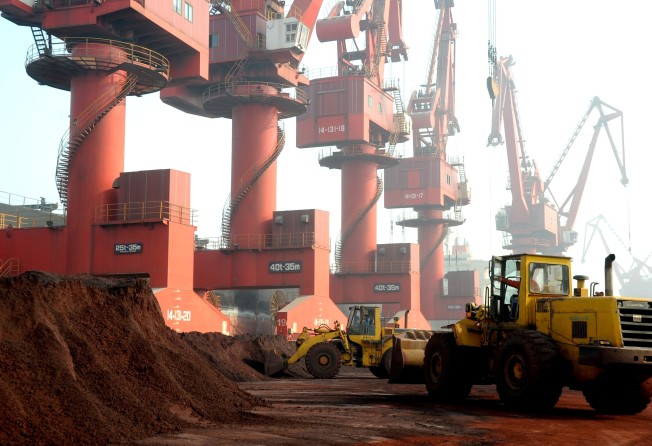China’s rare earth exports to the US could fall by a third as global demand drops 5 per cent this year amid coronavirus, analysts say
- ‘As a major consumer of China’s lanthanum, the US oil refining industry is leading the demand fall,’ says Adamas Intelligence managing director
- This year has seen a large decline in demand for rare-earth magnets as the pandemic has crushed demand for things like electric cars and smartphones

The coronavirus pandemic is expected to result in a 5 per cent decline in global demand for rare earths this year, with China’s exports to the US falling anywhere between a quarter and a third, according to analysts.
“We expect to see weak rare earths demand propagate through the rest of 2020, particularly those used in ceramics, glass and catalyst applications,” said David Merriman, a manager specialising in battery and electric vehicle materials at consultancy Roskill Information Services. “Even demand from magnet applications is expected to fall 4.5 per cent this year.”
Global consumption of neodymium magnets may drop 9.3 per cent this year after growing at an average annual rate of 6.4 per cent, Adamas Intelligence has forecast.
However, constrained by an expected under-supply from 2022 onward, Adamas forecasts global shortages of rare earths used in the magnets will reach 48,000 tonnes annually by 2030, enough to make 25 million electric vehicle motors.
The strategic metals research firm attributed this year’s decline to the health pandemic’s impact on demand for products such as electric cars, smartphones and wind generators.
Neodymium magnets are the most widely used and strongest type of permanent magnet. Besides iron, they contain rare earth elements neodymium, praseodymium, dysprosium and terbium.
Stunted economic activity in the US caused by its serious coronavirus outbreak saw China’s rare earth exports to the nation tumble 69 per cent year-on-year in July.
The full-year decline could come to 25 to 35 per cent, Adamas managing director Ryan Castilloux predicted.
“As a major consumer of China’s lanthanum, the US oil refining industry is leading the demand fall, followed by the catalyst industry and sectors that use rare earth magnets,” he told the Post.
There are 17 rare earth elements, with varied applications from electronic products to military equipment. While China’s output from mines accounted for 63 per cent of the global total last year, it supplied 80-90 per cent of the processed products.
This has raised supply security concerns for American and Japanese customers making and buying high-value technology products amid strained political relations in recent years with Beijing, which controls China’s rare earth industry.
The concern is particularly grave for rare earth-intensive industries like electric vehicles. Demand for rare earth magnets is expected to rebound strongly next year, and grow at a compound average rate of 9.7 per cent until the end of the decade, Adamas projected.
With average annual price gains of 5.6 to 9.9 per cent, the value of global magnet rare earth oxides sold could jump five-fold to US$15.7 billion by 2030 from this year, it added.
The biggest challenges facing US rare earth supply-chain developers is financing, besides the nurturing of processing, separation and smelting knowledge, Merriman said, adding that profit margins may be tight, especially if state-backed Chinese producers cut prices.
“Without government assistance, it will prove challenging for companies alone to build out the value chains needed to reduce reliance on China because of high upfront capital costs that translate to long project pay-back periods of 5 to 10 years, which is off-putting for western project financiers,” Castilloux said.
Still, Pini Althaus, CEO of USA Rare Earth, co-developer of the Round Top rare earth and critical minerals mine in Texas, is confident about the execution of its plan.
It aims to build a full mine-to-magnet supply chain to meet surging global demand for rare earth magnets.
A magnet plant is expected to be up and running in nine to 12 months, initially using scrap rare earth materials, to be replaced by output from Round Top in 2023.
The mining project is subject to a final feasibility study and fundraising.
“We are not looking for monetary handouts from the US government, our project is economically robust even using last year’s China pricing,” he said. “We are looking for funding from private investors ... we got indication of magnet orders several times of what we’ll be able to produce.”